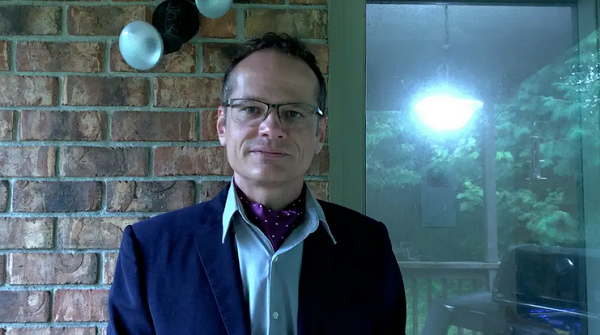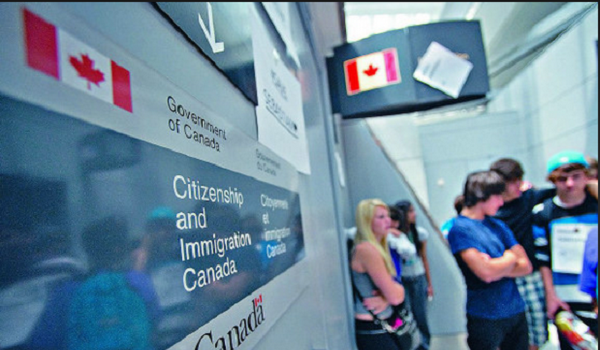Here’s how ChatGPT is remodeling post-secondary
When OpenAI debuted ChatGPT nearly a year ago, Western University professor Mark Daley was “gobsmacked.”
It’s not as if this expert in artificial intelligence and leader in neural computation research didn’t know this technology was possible in principle — research goes back to the 1940s. Rather, he just never thought he would see such a sophisticated, easily accessible large language model solving real-world problems in his lifetime.
So it’s fair to say when Daley first spoke to the Star in January — back when the chatbot was causing as much public handwringing as buzz — he also probably didn’t envision that he’d eventually be tasked with leading his university through this new frontier.
On Oct. 15, Daley becomes Western’s chief AI officer — the first such senior post at a Canadian university.
“I feel even more gobsmacked now than I did then, but also just enormously excited about all of the opportunities this offers,” said Daley, who was previously the university’s chief digital information officer.
Daley’s five-year term begins Sunday — perhaps on purpose, he said with a laugh, “to set the tone for the work ahead.”
It is a position he will help define. He expects to educate and advocate for the ethical use of the technology, but he will first start by listening to students, staff and faculty about their aspirations and concerns.
There will likely be plenty of both. The world is grappling with how AI is transforming our daily lives, and since the introduction of ChatGPT, school boards and post-secondary institutions have been scrambling to figure out whether to adapt, adopt or ban. Some have struck task forces and offered training for staff; others have blocked access to the tool.
Trained on a huge repository of resources from the internet, ChatGPT predicts and generates text, synthesizing existing information. Its ability to spit out uncannily human-sounding answers to prompts has fuelled debates over cheating — as if students have not found workarounds for forever — and fears that even when a chatbot is wrong, it will convince you it is right.
Skeptics will and should have a seat at the table, Daley said, but “the worst possible outcome would be for us to collectively decide just to retreat from this technology.”
The rate of change, he said, is like nothing he has seen in his career. “What we’re capable of doing with the technology we have now is a whole generation beyond what we could when we talked in January.” OpenAI rivals like Anthropic (Claude 2) and Google (Bard) are in a race to offer the most advanced AI systems.
And while academia may have understandably been in reactive mode when ChatGPT burst onto the scene last winter, this fall, faculty and institutions are cautiously experimenting with how to integrate it into the pedagogy, where it makes sense.
This is largely being driven by the sheer enthusiasm of students, Daley said. “They can see this technology is going to be with them for the rest of their lives and so they want to know right now how to best use it.”
But there is “no one-size-fits-all approach to this technology,” Daley warned. “To use it optimally, it’s going to be different for every unit on campus and every individual.”
And with that comes great responsibility, he added. “We have a lot of opportunities right now as humans to make good decisions that will allow us to use this technology to achieve fantastic outcomes.”
Here are a few ways Ontario universities are trying to do just that.
This past summer, as Joseph Wong, a professor at the Munk School of Global Affairs and Public Policy, prepared his fall syllabus, he began to wonder how might he use ChatGPT.
Wong, who also serves as vice-president, international at the University of Toronto, had already been privy to many administrative-level discussions about the technology.
“Here at the university, it was clear that this is something that we were not going to fight or ban or outlaw, but rather we were going to work to try to figure out how to embrace the technology, how to use it smartly in the way we do our research and teaching.”
In the past, Wong had students in his seminar on global innovations do readings and then write a reaction paper, but what, thought Wong, if they were to engage in a dialogue with the chatbot as part of the process?
He tried the assignment himself in July. “What I found really interesting is that I had to work really hard; I had to think very clearly on what I wanted to prompt ChatGPT to respond to.”
This fall, his students are required to have “an iterated conversation” with the chatbot while writing their reaction papers. Students craft a passage then ask ChatGPT about the ideas in it. The chatbot provides feedback, which students consider as they build their argument. They do this three times for each paper and must submit the whole back-and-forth text for grading.
Students have told Wong they are enjoying the assignment because “it is really challenging. They said you really have to think through what you want from ChatGPT and sometimes it will spit something back at you that you didn’t expect.”
The feedback is important during this experimental stage, Wong said.
“I decided to think of ChatGPT as a tool that is evolving quickly and a tool that most of us don’t know how to use,” including students, he added. “We are all early or naive adopters at this point.”
AN EXTENSIVE GUIDE FOR USE
There is still a lot of confusion among students about if and how they can use generative AI, says Clare Bermingham, director of the Writing and Communication Centre at the University of Waterloo.
They are faced with professors who say don’t use it all and those who are broadly integrating it into their courses. Coupled with the fear of being accused of cheating, “I think a lot of students are suspicious of it.”
And so to help them navigate it, the writing centre created a comprehensive how-to guide, published just after classes returned this fall.
“It is important to help students to think critically about these technologies,” said Bermingham. “We wanted to make sure that students felt like they had the information and the knowledge that they needed to be able to decide whether to use it, and if they do use it, then what their responsibilities are in that context.”
The document takes students, researchers and faculty through everything from how to ethically use the technology to brainstorm ideas and draft an argument, to how to properly elicit feedback and cite interactions.
“These are going to be living guides,” said Bermingham. “We’re going to keep going back to them and changing and updating them as we need to.”
The writing centre — which supports students, from undergraduate to postdoc, through workshops and some 7,000 one-on-one appointments each year — also trained student tutors last month on how to approach conversations around generative AI.
Bermingham acknowledges the fears around the technology. When Wikipedia was introduced, everyone said it would change research forever, she noted. “But it hasn’t. It’s a great tool, but it’s not everything, and it’s never going to be everything.
“And I think (the technology) is going to evolve, but there are things that it’s not going to change, like the importance of learning … and how to do the critical thinking about problems and communicate those.”
A TECH TA
At Toronto Metropolitan University, there’s a remarkable new teaching assistant who’s available any time to help, which is a real advantage for students cramming for exams at 2 in the morning.
ProfBot “can engage students whenever and wherever they want,” said Sean Wise, a professor at the Ted Rogers School of Management.
Wise created ProfBot with a developer. The idea is to facilitate learning by allowing students to quiz themselves. Integrating OpenAI, this tech tutor asks students questions from a list submitted by their professor and it then compares student responses to the professor’s answers, providing instant feedback on how they can improve.
Wise launched a pilot last spring, providing it to 200 students taking an introductory course in entrepreneurship. Students were given access to Profbot for nine days before final exams and most used it multiple times. In a post-exam survey, more than 85 per cent said it helped them to prepare.
Wise, whose former student is a developer for OpenAI, said that, since the launch of ChatGPT last November, he wanted to show it could be used as a powerful tool.
“I felt it could be a game changer for education. I still do.”
This article was reported by The Star


















